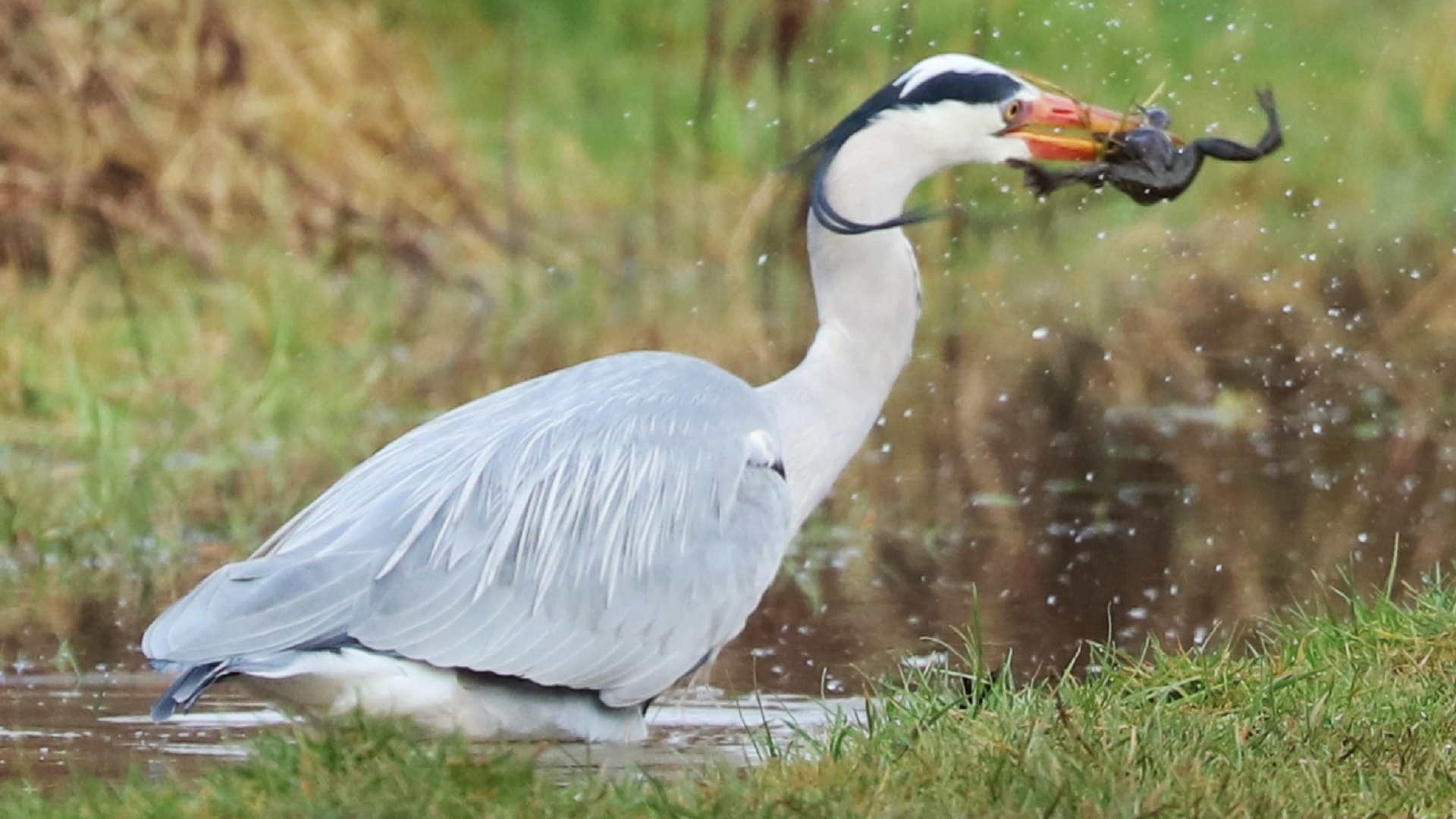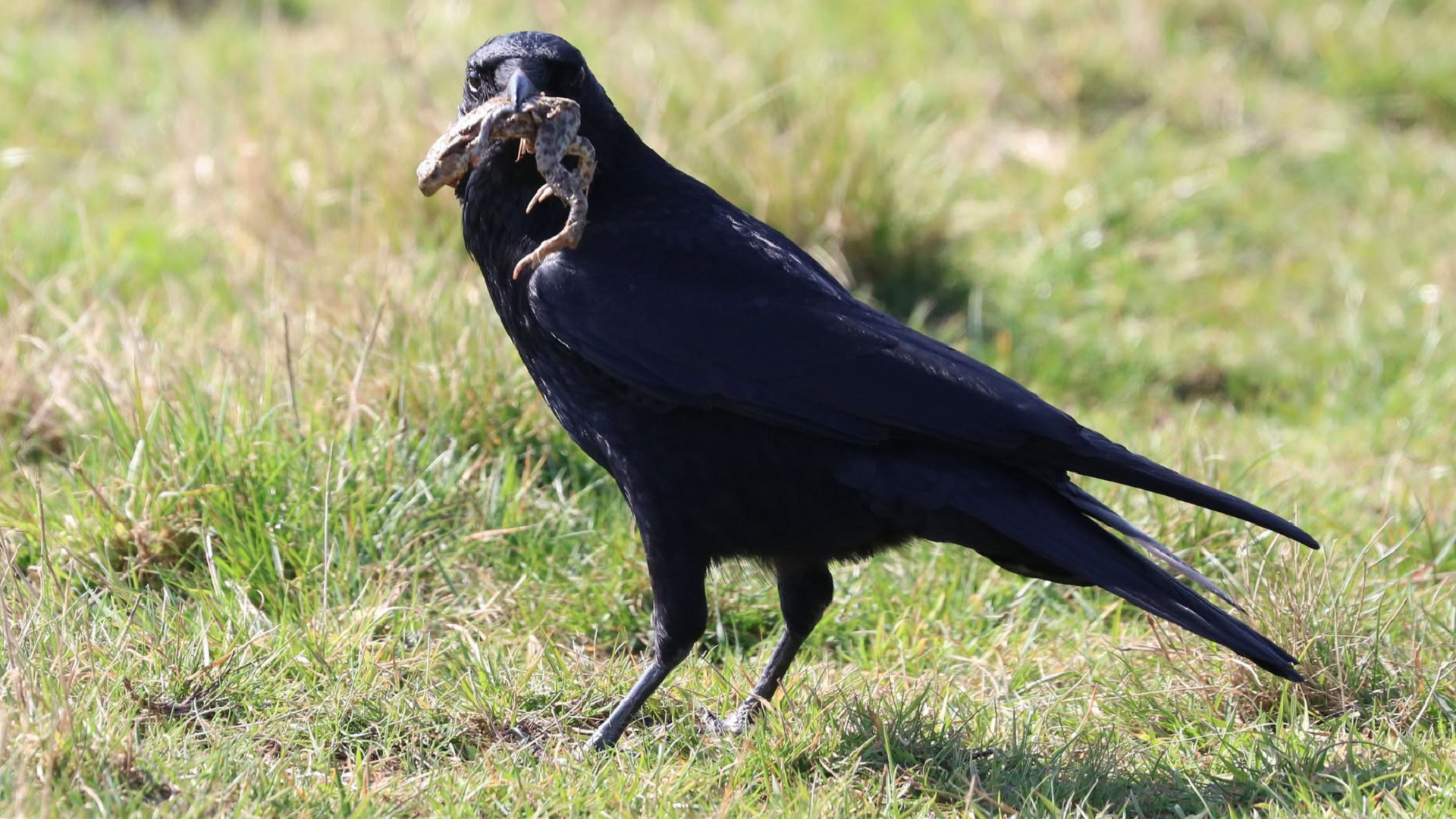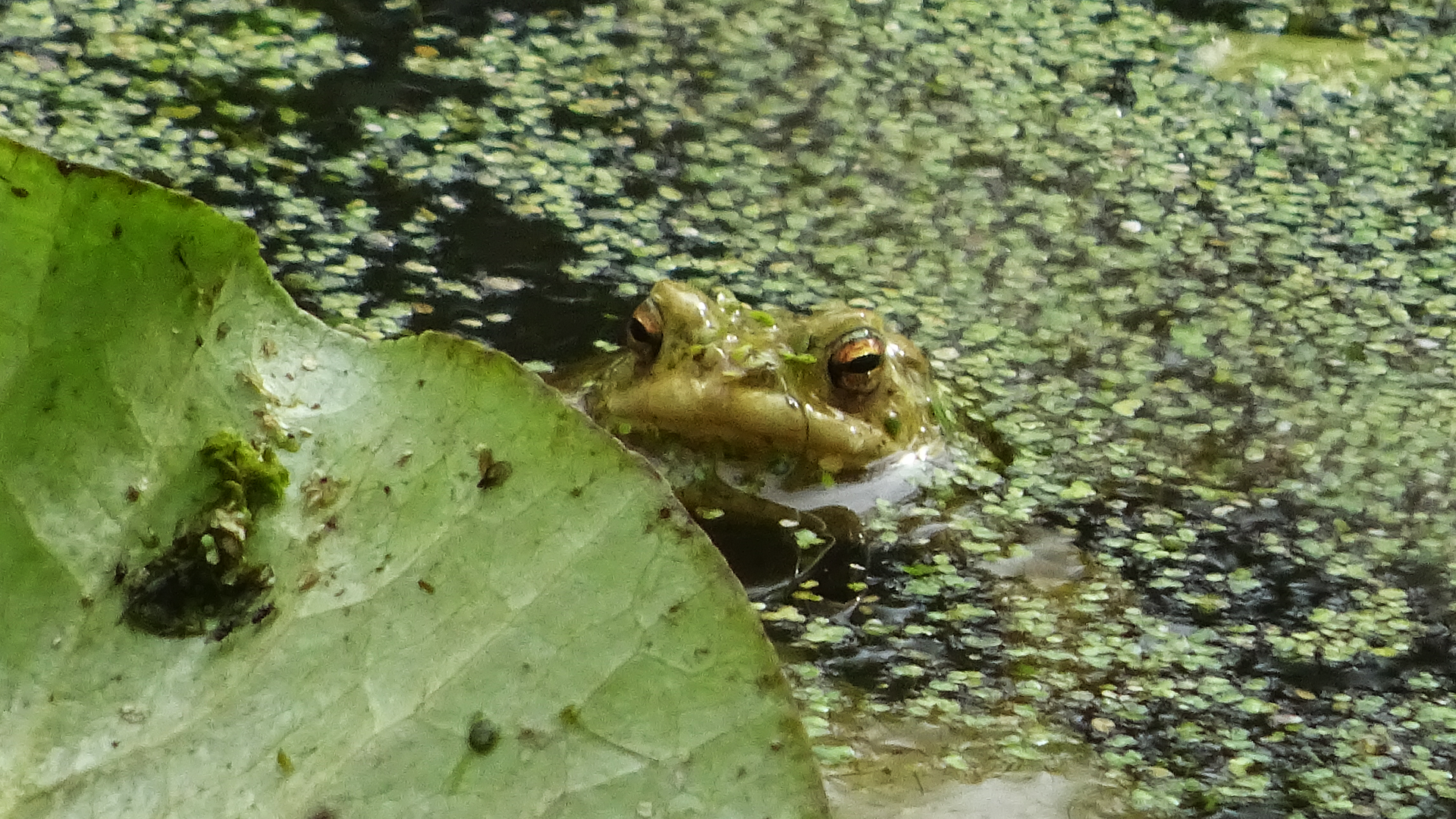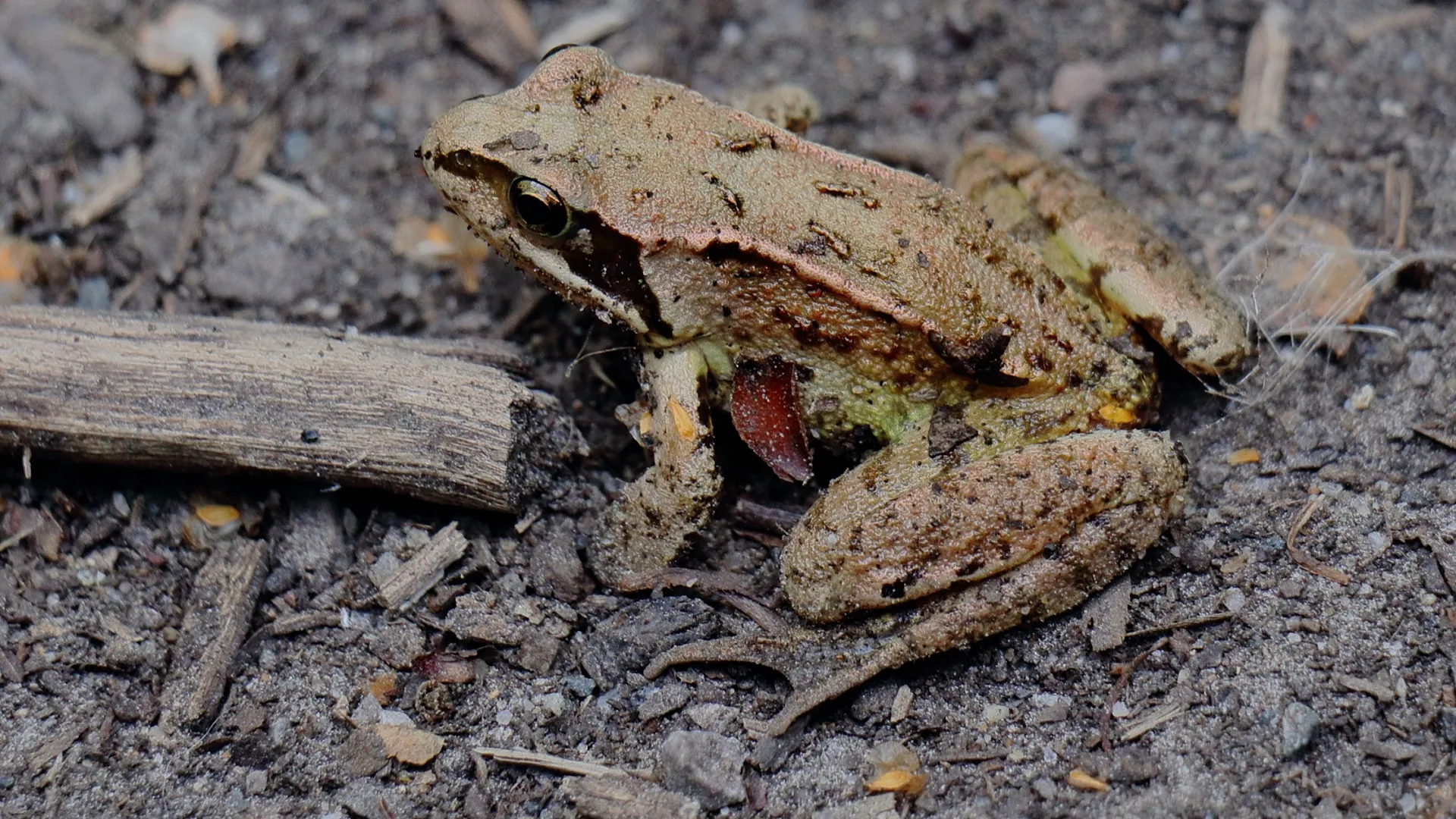Common Frog
Rana temporaria

TQ4792 18/05/2022 ©Raymond Small
Common Frogs are found in various colours, ranging from all shades of olive, brown or grey, but seldom are they bright green. There is normally a dark patch behind the eye and dark bands on the legs. Individuals are able to alter colour in response to light and temperature conditions. When spring approaches frogs emerge from hibernation and make their annual migration to Hainault Lake. The time this happens is governed by the temperature. Frogs croak to advertise that they are available for mating. The male jumps on a female's back and takes a tight grip. This hold may last several days until the female releases her eggs which is normally done at night in shallow water. Sometimes more than one male will be attached. Females make release calls to indicate they have spawned. Males make release calls too but in their case it is to reject unwelcome advances from other males. Frog spawn is usually laid in tight clusters at the edge of the water. Tadpoles stay together in a writhing mass when they first hatch. White spawn occurs when it has not been successfully fertilised. This usually breaks down naturally in the water, however occasionally the white dots develop into white or ‘transparent’ tadpoles.
Filming underwater proved challenging and a bit hit and miss because there was no way to look through the viewfinder. Not everything went as planned. No wonder large budget film makers move wildlife into specially designed tanks for filming! This movie contains frogs and toads.

TQ4792 26/02/2025 ©Michael Trump
Few tadpoles survive until adulthood, some reports say 1 in 50. Birds, newts, fish, snakes, rats, foxes, stoats, weasels, hedgehogs, water boatmen and dragonfly larvae all feed on tadpoles. Becoming an adult can be just as hazardous. This frog captured by a heron has croaked for the last time.

TQ4792 29/03/2025 ©Michael Trump
This picture shows a crow getting in on the act of frog catching. Frogs seem to be a more popular food choice than toads maybe because the latter secrete toxins from the body when threatened. However, some predators such as hedgehogs, stoats, weasels, rats and corvids are not deterred. Crows have learned to avoid the poisonous glands by flipping over a toad onto its back to reveal the soft and edible undersides. Dogs can become seriously ill if they bite or lick a toad and the best way to avoid this happening is to use a lead. Toxins sometimes hang around in water where toads have been, including puddles.
© hainaultforest.net. All rights reserved.




